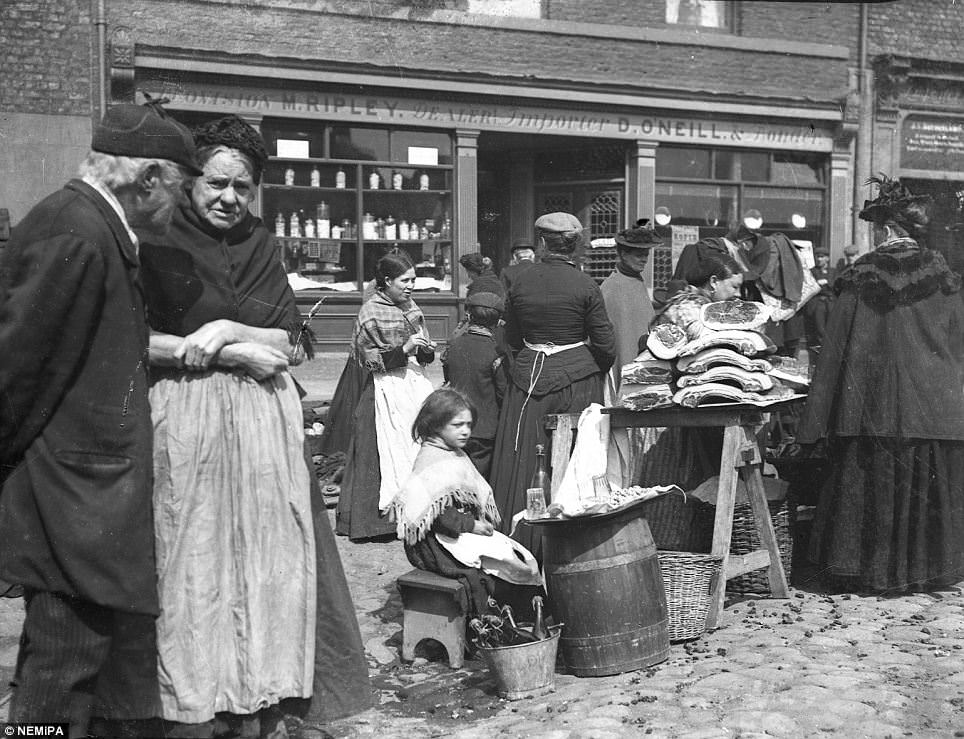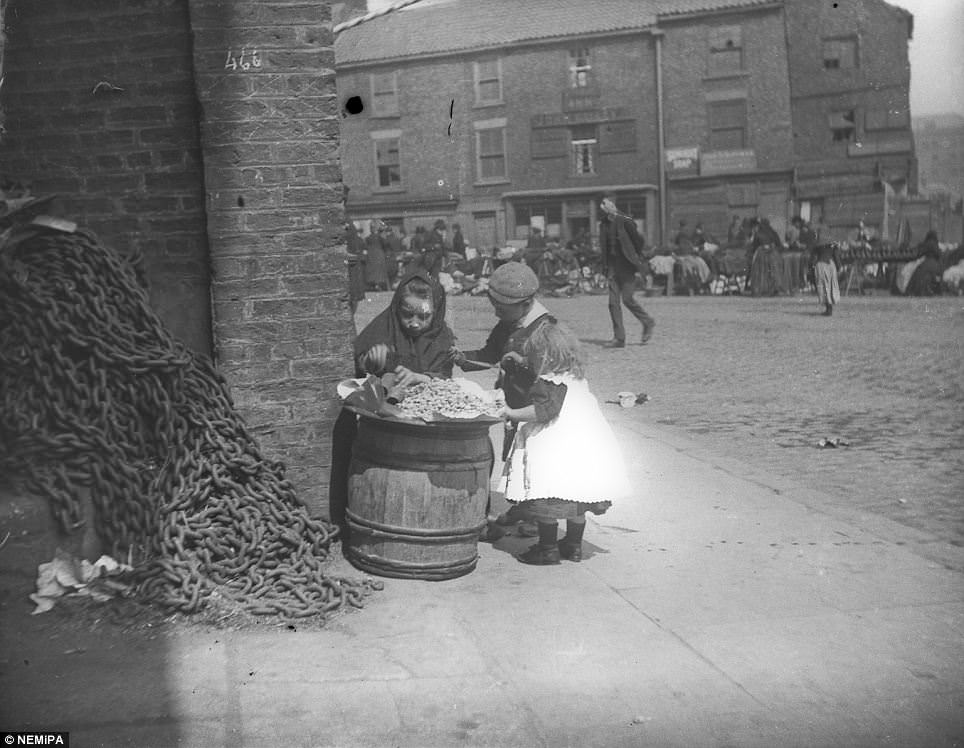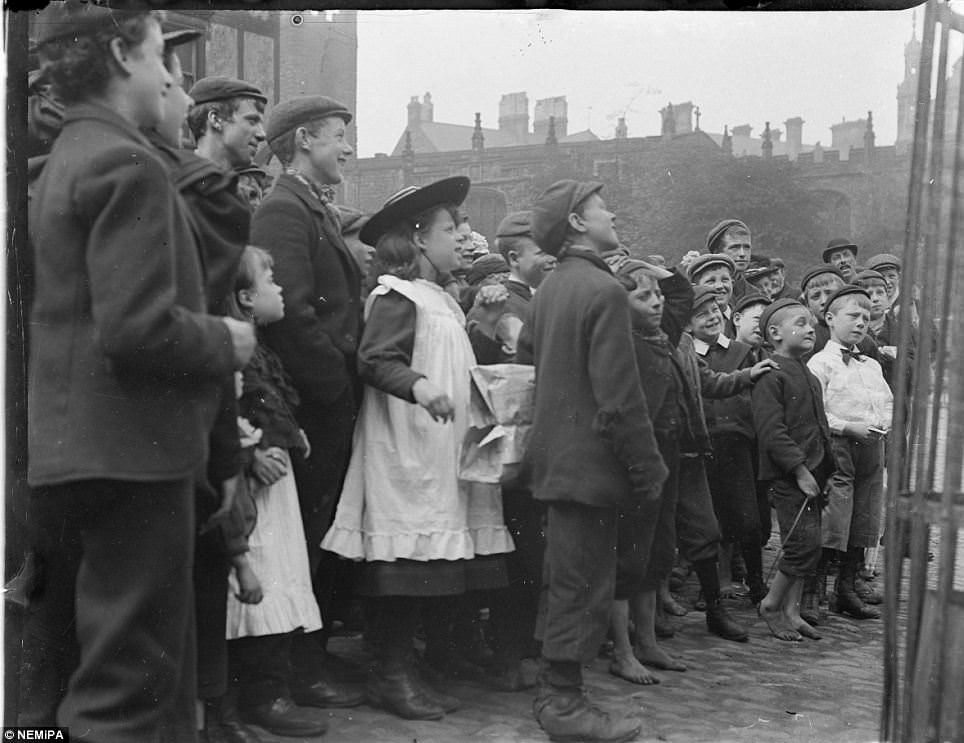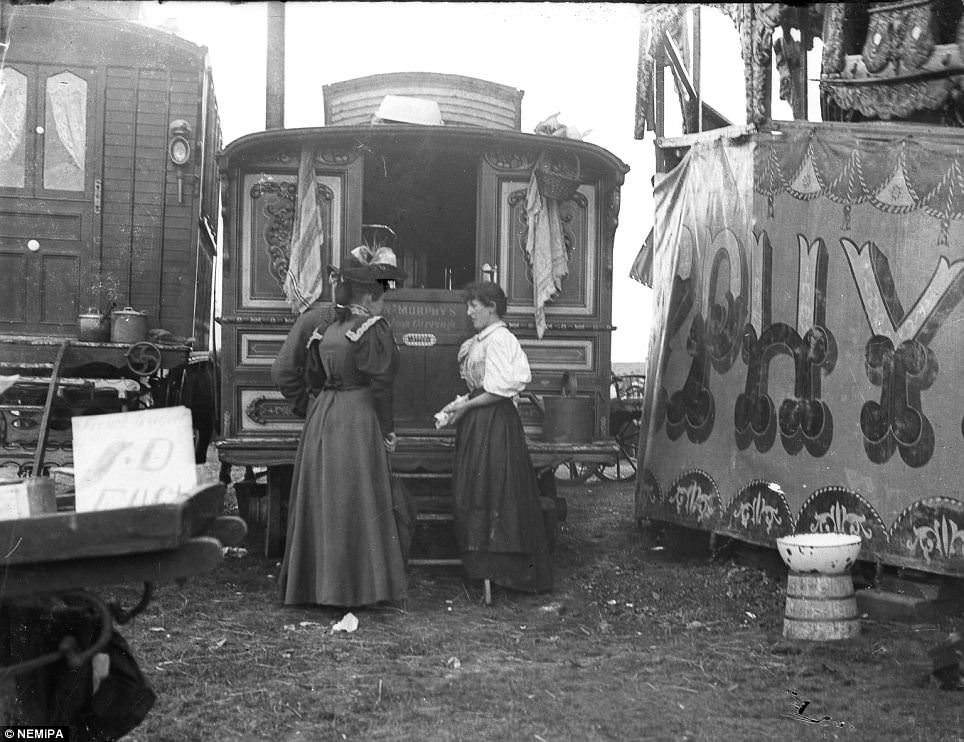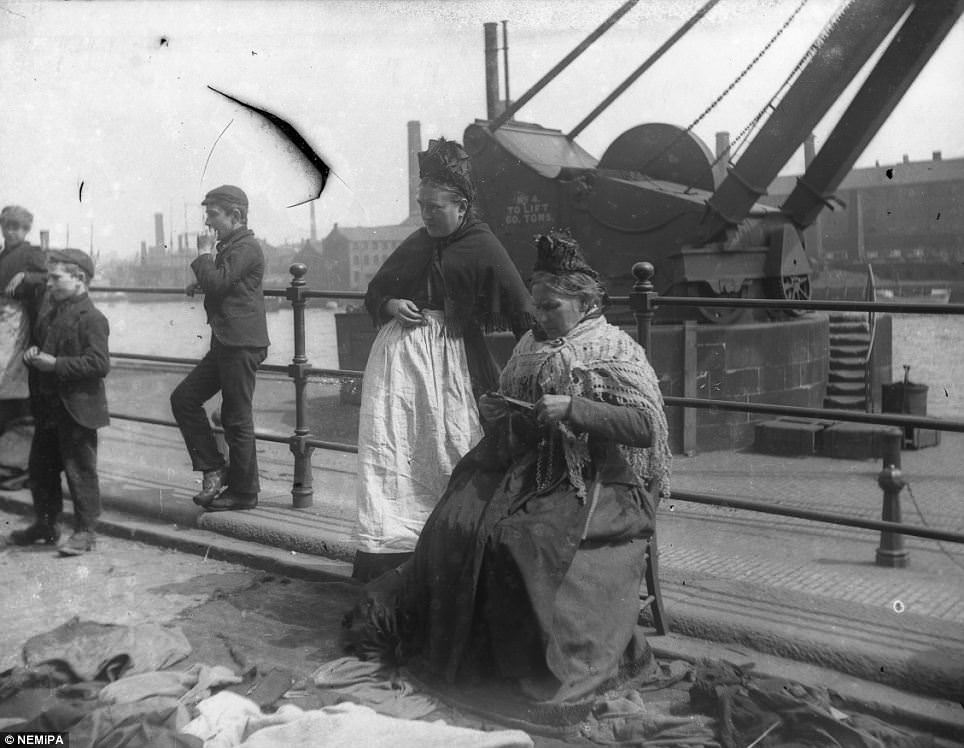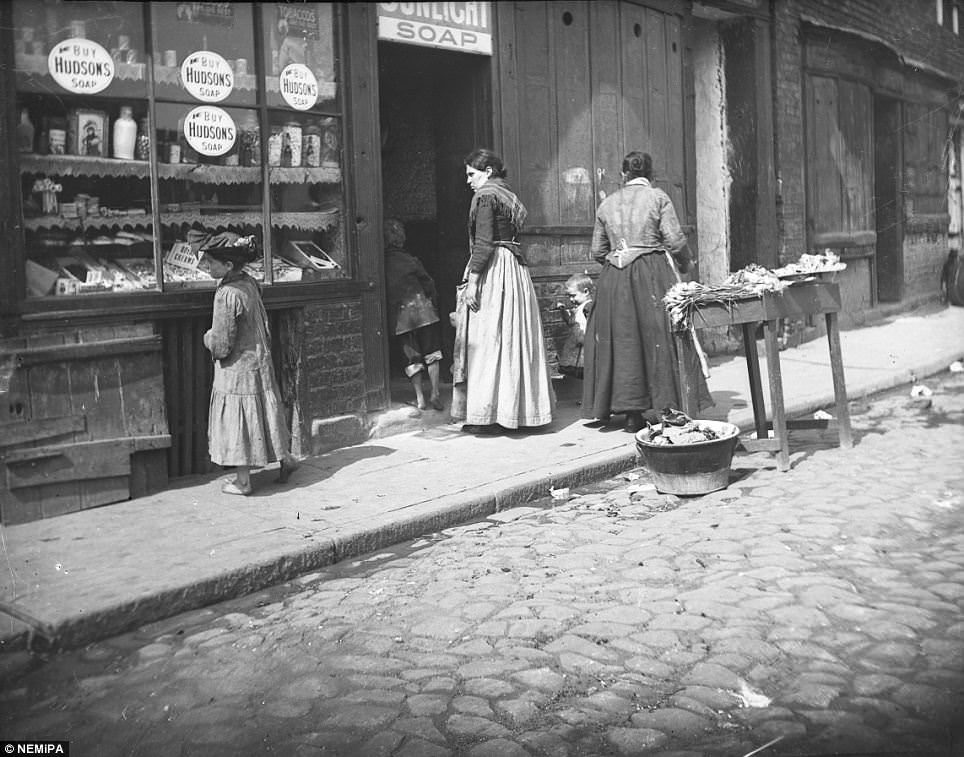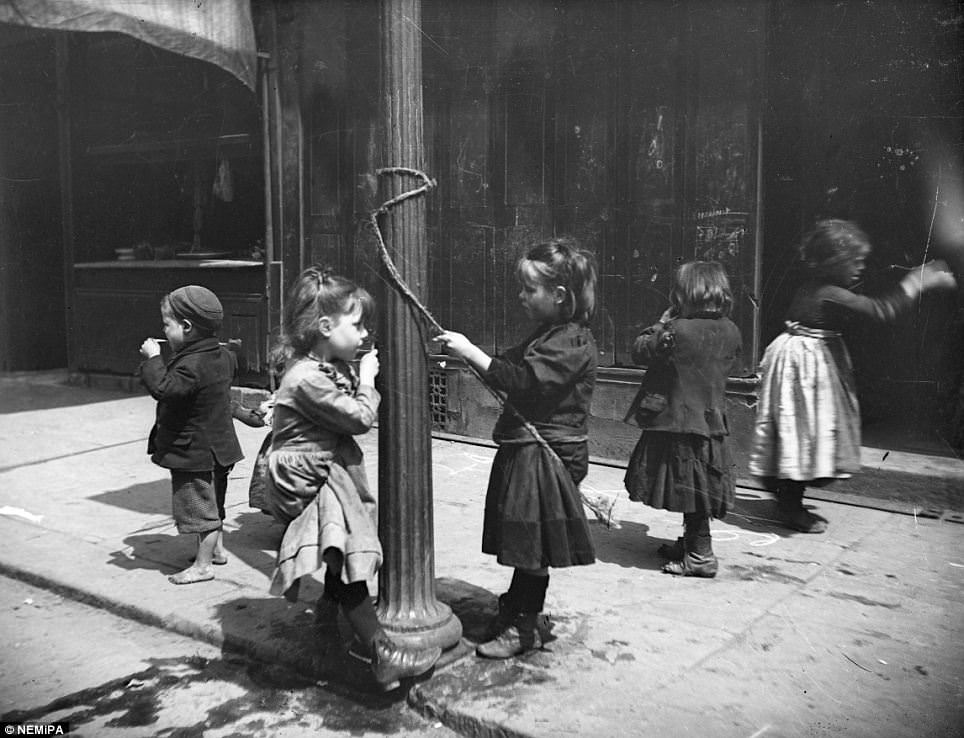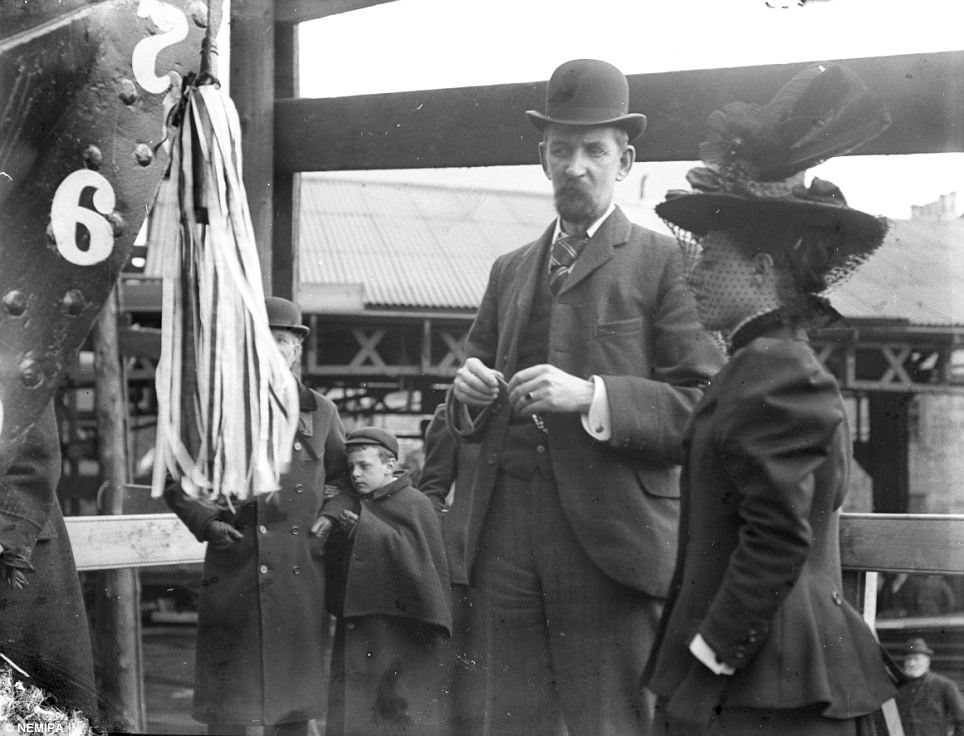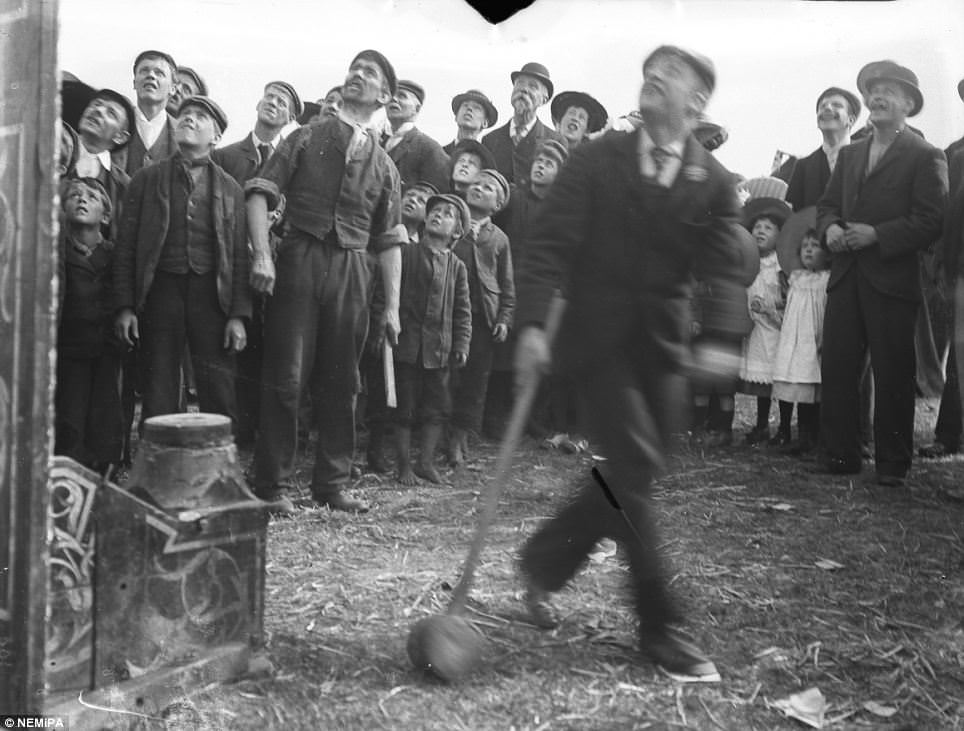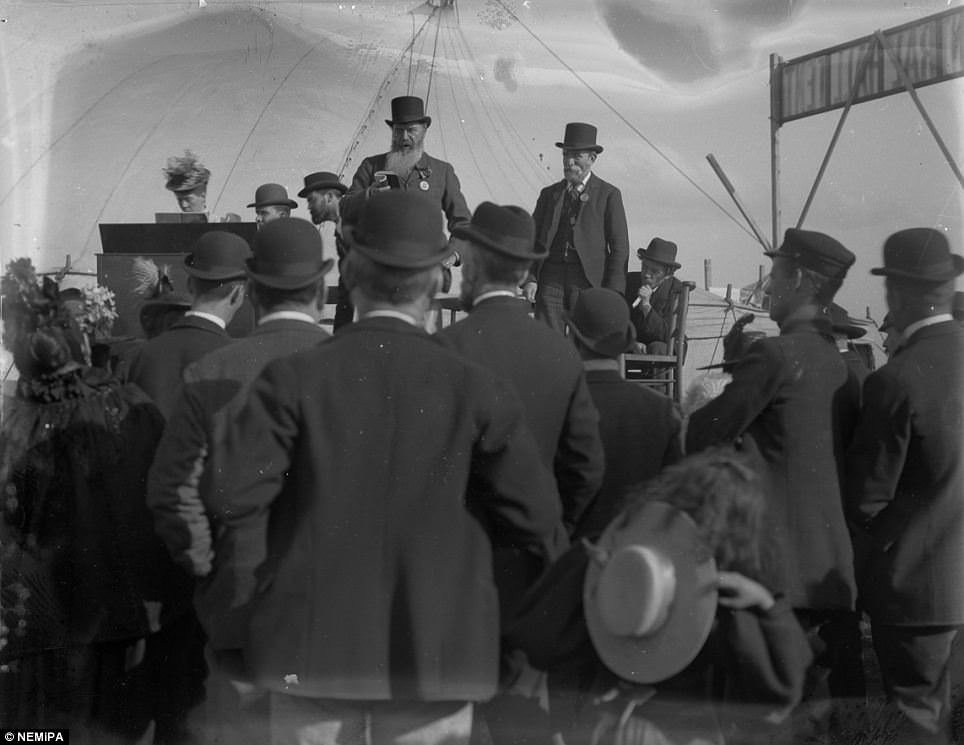A collection of glass-plate negatives, discovered and dating back to the 1880s, offers a rare and candid look into the daily life of 19th-century Newcastle. Found in a forgotten box at the city’s Mining Institute, these images move beyond the formal, posed portraits typical of the Victorian era. Instead, they present a city bustling with working-class people, captured with a style that feels surprisingly modern and engaged.
The Industrial Heart of the City
In the 1880s, Newcastle was a powerhouse of the Industrial Revolution. Its economy was driven by coal mining, shipbuilding on the River Tyne, and heavy engineering works. The discovered photographs document the people who fueled these industries. They show street scenes populated not by high society, but by the ordinary men, women, and children of the city.
The images depict a landscape defined by industry. Cobblestone streets are lined with brick buildings, often darkened by the smoke from countless chimneys. Horse-drawn carts were the primary means of transporting goods, and the photographs show them laden with barrels, sacks, and other cargo, navigating the busy thoroughfares. The photographer captured daily commerce in action, from shopfronts with simple signage to street vendors selling their wares.
Read more
A Candid Approach to Photography
The style of these photographs is what makes them so remarkable. Photography in the 1880s was a cumbersome process. A photographer would have used a large plate camera, most likely mounted on a heavy wooden tripod. This equipment required long exposure times, meaning subjects had to remain still to avoid blurring the image. For this reason, most photography of the period was formal and staged.
The photographer of the Newcastle collection, however, achieved a sense of spontaneity that was far ahead of their time. The images have an observational, documentary quality. People are shown going about their daily business, seemingly unaware of or unconcerned by the camera. Children are seen playing in the street, while adults are captured mid-conversation or in the middle of their work. This approach provides a genuine, unvarnished look at everyday life.
The People on the Streets
The clothing worn by the subjects of these photographs tells a story of social class and daily life. The working men are dressed in durable, functional attire suitable for manual labor, often including heavy boots and caps. The women wear long, dark skirts, aprons, and shawls, the practical uniform for managing a household in a coal-dusted city.
Children are a frequent subject, their presence enlivening the street scenes. They are dressed in simpler, often patched-up versions of adult clothing. Their faces, captured with striking clarity on the glass negatives, show a range of expressions, from curiosity to mischievousness. These portraits of “Joe Bloggs on the street,” as archivist Aaron Guy described them, offer a powerful connection to the anonymous individuals who formed the backbone of the Victorian city.


